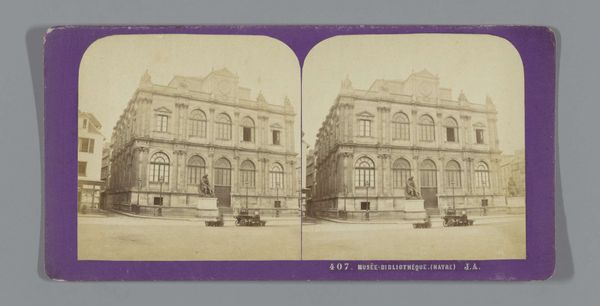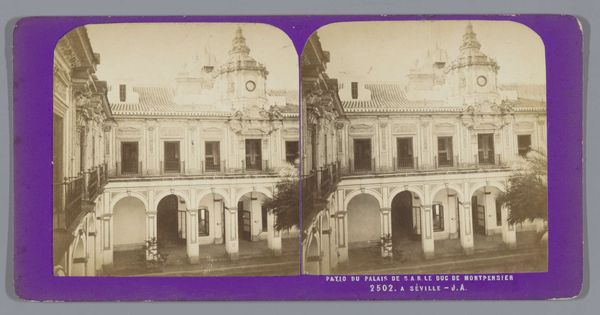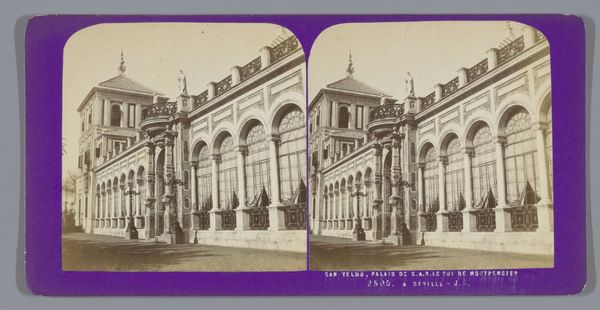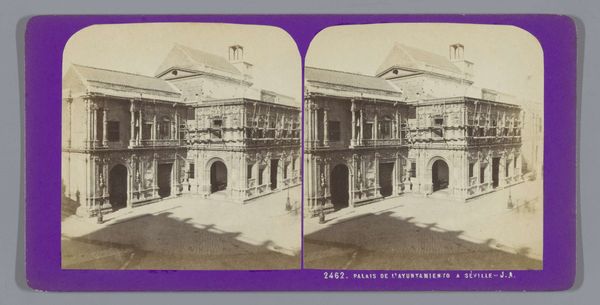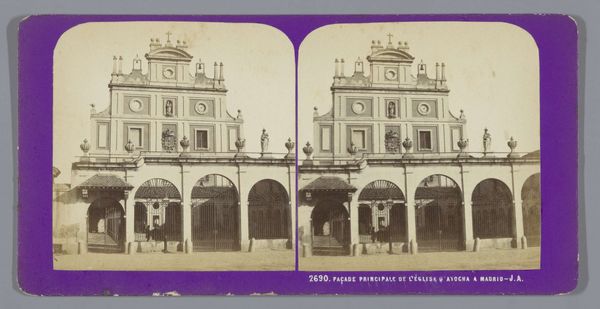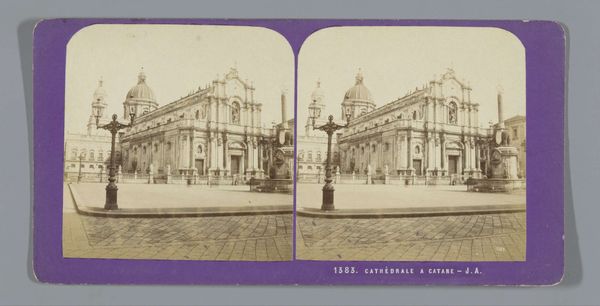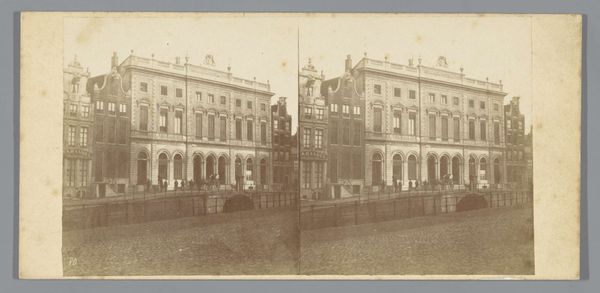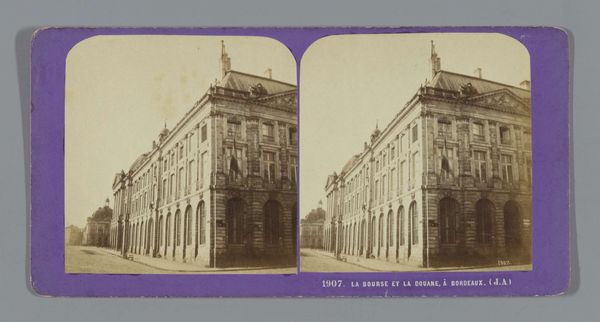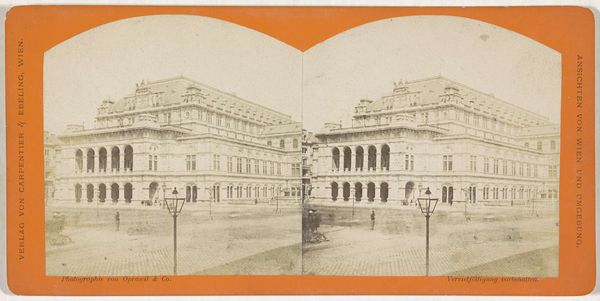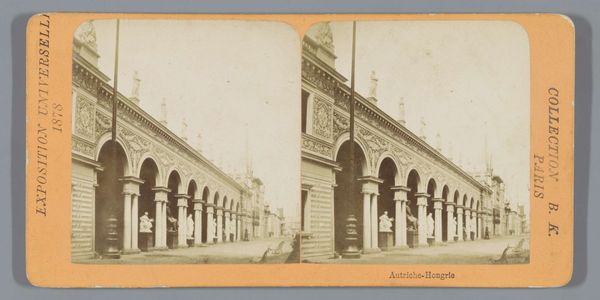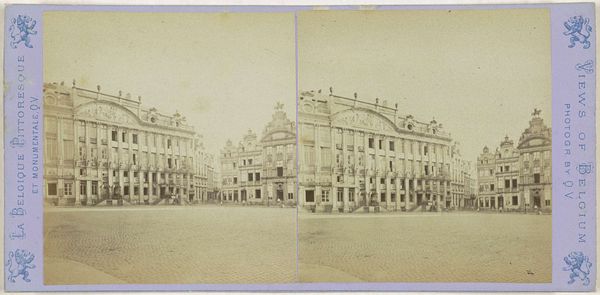
Dimensions: height 85 mm, width 170 mm
Copyright: Rijks Museum: Open Domain
Curator: This image is a stereo card titled “Gevel van het Teatro Real te Madrid,” or "Facade of the Royal Theater in Madrid" in English. The photograph, a print made from a photographic negative, was taken by Jean Andrieu sometime between 1862 and 1876. Editor: The stark, classical facade practically radiates authority. Despite the low-contrast tones, I sense a monument to something enduring, or at least, intended to be. Curator: Absolutely, the architecture speaks volumes. It’s high Neoclassicism. Look at the frieze at the top, the symmetry of the windows, the portico. There is a definite reaching back to antiquity for ideals of order, reason, and control, especially after the turbulence of the early 19th century. Editor: Do you think it really served that purpose though? I mean, art can aspire to order, but life often doesn't cooperate. Looking at it now, in the 21st century, knowing its history, all that careful design reads to me as aspirational. A beautiful attempt, not quite fully realised because of inevitable historical contingencies. Curator: Well, in some ways that's true of all symbols, isn’t it? The meaning always rests both in its intent and the viewer’s interpretation across time. I can certainly appreciate your sentiment about historical context and how this relates to identity. It also has psychological reverberations; it asks "What is theatre?", but also implicitly "What is Spain?" at this pivotal time of modernization. Editor: Precisely! This makes me think about whose voices get amplified within such a monumental institution, both then and now. The facade implies a controlled narrative, but what about the other narratives existing on the margins? The photograph even captures a blurry ghost-like figure at its base...an unseen presence that destabilizes such architectural confidence. Curator: Yes! Consider how theater houses so many levels of presentation and artifice. And now this theater gets photographed and re-presented, like echoes within echoes. So it’s an interesting record to reflect on what symbols like buildings can say – or conceal – across a span of years. Editor: Ultimately, it feels important to grapple with how we encounter these symbols. To see not just their imposed grandeur, but also the lives lived in, around, and despite them.
Comments
No comments
Be the first to comment and join the conversation on the ultimate creative platform.
